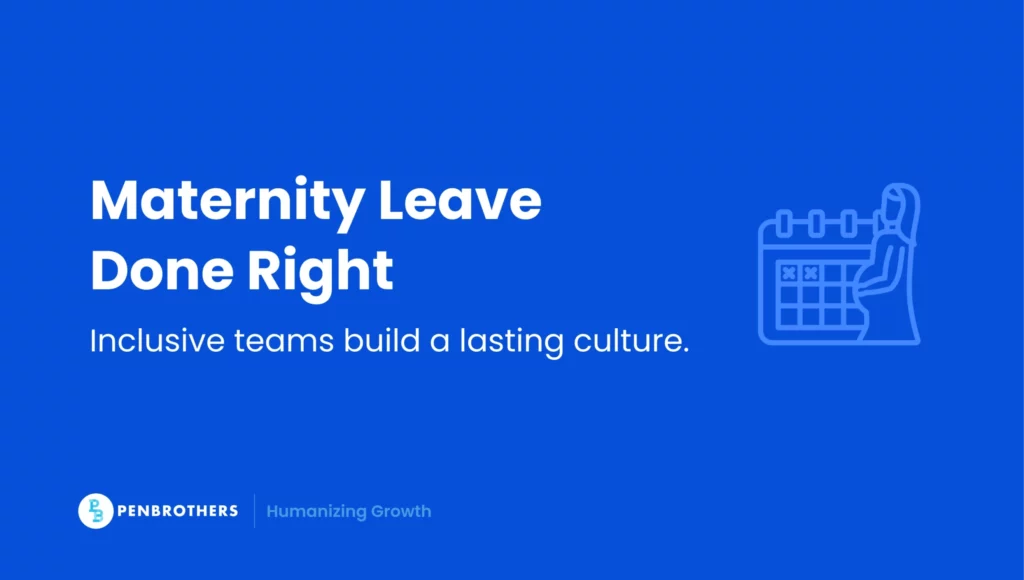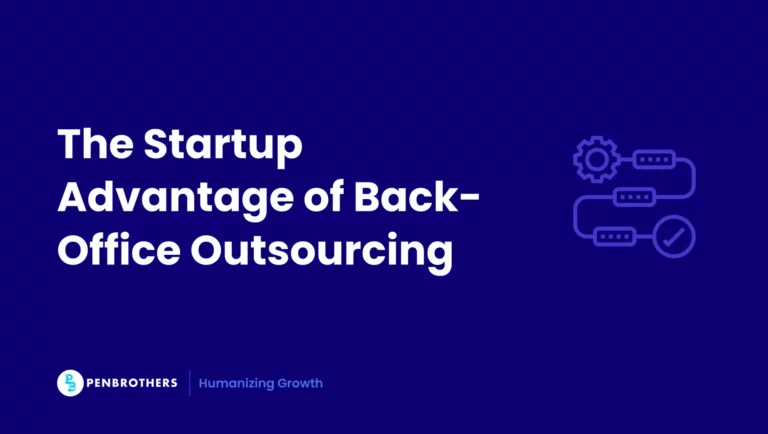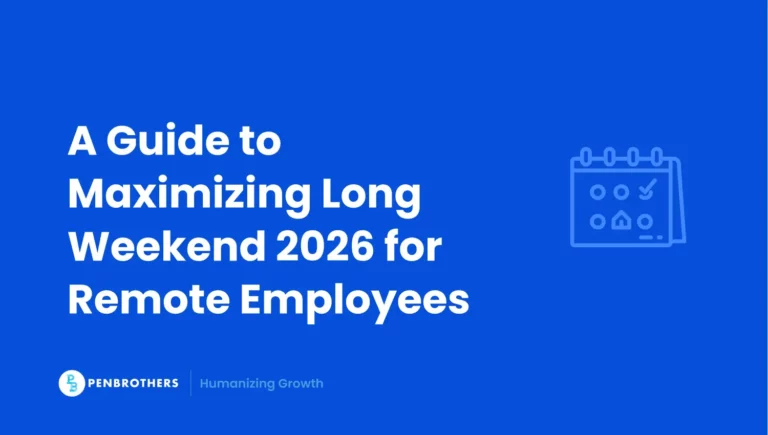Maternity leave is more than just time off. It’s a vital benefit that supports working mothers during pregnancy, childbirth, and recovery. In the Philippines, maternity leave policies have significantly improved under Republic Act 11210, also known as the Expanded Maternity Leave Law. With up to 105 days of paid leave (or 120 days for solo parents), the country now stands among the most progressive in Southeast Asia when it comes to maternity benefits.
Understanding your maternity leave rights ensures that you receive the financial and job security you deserve. Whether you’re an employee, freelancer, or employer, this guide breaks down everything you need to know about maternity leave in the Philippines.
Key Takeaways
- Generous Paid Leave Duration: The Expanded Maternity Leave Law (RA 11210) grants eligible female workers 105 days of fully paid leave for live childbirth. This is extended to 120 days for qualified solo parents, and 60 days of paid leave is provided in the event of a miscarriage or emergency termination of pregnancy.
- Broad Eligibility Tied to SSS Contributions: The benefit is available to all female members of the Social Security System (SSS), including private-sector employees, freelancers, and self-employed individuals. The critical requirement is having at least three monthly SSS contributions within the 12-month period immediately preceding the semester of the childbirth.
- “Full Pay” is a Combination of SSS Benefits and Employer Pay: The law guarantees “full pay,” which is funded by two sources. The SSS pays the primary benefit (based on the member’s Average Monthly Salary Credit), and the employer is required to pay the “salary differential”—the difference between the employee’s full salary and the SSS benefit.
- 13th Month Pay is Pro-Rated and Will Be Lower: A critical point is that the 13th-month pay will be reduced. Because the SSS benefit is not considered “basic salary,” the months an employee is on maternity leave are excluded from the pro-rata computation of the 13th-month pay, resulting in a smaller amount for that year.
- Job Security is Legally Protected: An employer is legally prohibited from terminating an employee for taking maternity leave. Upon her return, the employee is entitled to be reinstated to her same position or an equivalent one with the same pay and benefits.
Who Qualifies for Maternity Leave in the Philippines?
Eligibility for maternity leave depends on your employment classification.. Here’s a breakdown:
- Private-Sector Employees: If you’re a member of the Social Security System (SSS) and have paid at least three monthly contributions in the past 12 months, you’re entitled to maternity benefits.
- Government Employees: Covered under the Government Service Insurance System (GSIS), public-sector workers receive fully paid maternity leave as long as they meet government requirements.
- Freelancers & Self-Employed Individuals: If you’re voluntarily contributing to SSS, you can still claim maternity benefits. Regular contributions are key to eligibility.
- Contractual & Gig Workers: If you’re employed under an agency or project-based contract, your eligibility depends on your SSS contributions. Unfortunately, not all contractual workers are covered.
- Adoptive Mothers: The 105-day benefit under RA 11210 applies specifically to live childbirth. However, adoptive parents are entitled to other leave benefits. Under RA 8552 (Domestic Adoption Act), adoptive parents are entitled to the same benefits as biological parents. This has been clarified to grant a 60-day maternity leave for female employees who adopt a minor under seven (7) years of age, ensuring time for bonding.
Why This Matters: Knowing your eligibility allows you to plan ahead and ensure you don’t miss out on financial support during your maternity period.
Related reading:
- Paternity Leave in the Philippines: 2025 Employment Laws
- Solo Parent Leave in the Philippines: Employees and Employers 2025 Guide
- How to Plan Your Leave in 2025
How Do I Calculate My Pregnancy Week?
The calculation of pregnancy begins on the first day of your last menstrual period (LMP), rather than the actual date of conception. That’s week 1, and most pregnancies last 40 weeks. This medical timeline also shapes your HR documentation, SSS filing, and maternity leave planning.
Understanding what week you’re in helps you:
- Time your SSS MAT-1 submission before the 8th week (for early processing)
- Notify your employer in advance
- Strategize your handover and leave plan based on real milestones
Tip: Use your pregnancy week to backward-plan key decisions. Filing too late may cause delays; planning early gives you space to exit gracefully, document processes, and come back with clarity.
SSS Timeline Tip: After delivery, submit your MAT-2 form with your child’s birth certificate to claim your benefit.
When Can You Start Maternity Leave?
The law gives you the flexibility, but the reality is, the timing of your leave impacts everything: how smoothly your team transitions, how you recover, and how you return.
To avoid delays in receiving your benefit, submit SSS MAT-1 (Maternity Notification Form) early, ideally during your first trimester. The earlier you align your leave timeline with both your doctor and your employer, the more control you’ll have.
Legal Tip: You must have made at least 3 SSS contributions in the 12 months before the semester of childbirth to qualify. If you’re considering an SSS salary loan should there be a need to for this new chapter as a mom, ensuring your contributions are up to date is essential.
Real-life Insight: If you’re in a high-impact role, start mapping out your handovers by week 28. You deserve a calm exit, and a confident return.
Maternity Leave Benefits: How Much Can You Get?
The Expanded Maternity Leave Law offers generous benefits for mothers, regardless of civil status, in the workforce. Here’s what you can expect:
- 105 days of fully paid leave (with an option to extend for 30 more days without pay).
- An additional 15 days of paid maternity leave given to solo parents, for a total of 120 days. This requires a valid Solo Parent ID issued under RA 11861 (Expanded Solo Parents’ Welfare Act).
- Important Clarification: This 15-day extension of maternity leave is separate from the seven-day annual parental leave also granted by RA 11861. The 7-day parental leave is an employer-paid benefit available to a solo parent who has rendered at least six months of service and can be used for parental duties.
- 60 days of paid leave in case of miscarriage or emergency termination of pregnancy.
- For consecutive pregnancies or multiple childbirths: You may apply for maternity leave in every instance of pregnancy, regardless of frequency.
In case of overlapping maternity benefit claims (e.g., one miscarriage or emergency termination of pregnancy after another, or a live childbirth followed by miscarriage), you shall be granted maternity leave benefits for the two contingencies in a consecutive manner. For SSS members, the amount of benefit corresponding to the period where there is an overlap shall be deducted from the current maternity benefit claim. For multiple childbirths (e.g. twins), a woman shall be granted only one maternity benefit, regardless of the number of offspring/children per delivery.
Employer and SSS-funded benefits ensure that your maternity pay is covered while you’re on leave. Full payment of maternity leave benefits to qualified female workers shall be advanced by the employer. The SSS shall immediately reimburse the employer for the applicable SSS maternity benefits.
How Much Is Maternity Allowance?
Your AMSC, or Average Monthly Salary Credit, serves as the basis for computing your maternity allowance from SSS. The formula used is:
Daily Salary Credit × 105 days = Total SSS Maternity Benefit
You can claim this amount whether you’re married, single, or even in the event of miscarriage (for which 60 days are granted). What matters is that you’ve met the minimum contribution requirements and submitted the right documents.
But here’s what many overlook: this benefit is paid by SSS, not your employer. Unless your company has a top-up policy or offers return-to-work programs, what you receive depends entirely on SSS computations.
If you’re raising a child on your own, the law, specifically RA 11861, allows you to extend your maternity leave from 105 to 120 days.
Important: Your employer is legally prohibited from reducing or denying these benefits. You’re protected by law not just in benefits, but also against termination during pregnancy and leave.
What to look for in a workplace: The best employers go beyond the law. They design for reentry.
Ask: Do they offer flexibility upon return? Will you still be looped in on big projects? That’s the real sign of support.
Does Maternity Leave Affect Bonuses and 13th Month Pay?
This is a critical point. While your SSS maternity benefit is not taxable and is not deducted from your 13th-month pay, the time you are on leave does affect the final computation.
According to the Department of Labor and Employment (DOLE), 13th-month pay is pro-rated based on the “total basic salary earned during the year.” Since the SSS maternity benefit is a government benefit and not “basic salary” paid by your employer, the months you are on leave are excluded from the pro-rata calculation.
Example: If your basic salary is PHP 30,000/month, but you were on maternity leave for 3.5 months (105 days), your 13th-month pay will be calculated based on the 8.5 months you earned basic salary, not the full 12 months.
Why This Matters: Properly understanding your maternity pay ensures that you’re not shortchanged when your salary is calculated.
Related: See if you’re getting a fair pay in the 2025 Philippine Salary Guide.
Step-by-Step Guide: How to Apply for Maternity Leave
Avoid unnecessary delays by following the correct maternity leave application process:
For Private-Sector Employees (SSS Members)
- Notify your employer as soon as possible of the pregnancy and the expected date of delivery 60 days in advance of the requested maternity leave. In turn, employers shall transmit this information to the SSS.
- Submit required documents: SSS Maternity Notification Form, proof of pregnancy (ultrasound/medical certificate), and SSS contributions record.
- Your employer files your claim with SSS.
- Once approved, maternity benefits are credited directly to you (via SSS UMID ATM card or bank account).
For Government Employees (GSIS Members)
- Apply for maternity leave through your HR department.
- Submit a medical certificate and other required government forms.
- Your salary continues during your leave period, as covered by GSIS funds.
For Freelancers & Voluntary SSS Members
- Ensure your SSS contributions are updated.
- File your Maternity Notification online via the My.SSS portal.
- Submit the required medical documents and await SSS approval.
Filing Deadline: SSS requires maternity notification before childbirth to ensure smooth processing of benefits. While early notification is encouraged, delays do not automatically disqualify a claim as long as the required contributions are met.
What If You Don’t Meet SSS Contribution Requirements?
Missed contributions? You may still qualify for partial benefits or explore other financial assistance options:
- Employer-Paid Leave Policies: Some companies offer maternity packages beyond SSS coverage.
- PhilHealth Assistance: Covers childbirth delivery expenses.
- Government Aid Programs: DSWD and local government units may offer financial support for expectant mothers.
Why This Matters: Planning ahead ensures you don’t experience financial hardship during your maternity leave.
Returning to Work After Maternity Leave
Going back to work after maternity leave can be challenging. Here’s what you need to know:
- Your employer cannot terminate you for taking maternity leave.
- You must return to the same or an equivalent position.
- You are entitled to breastfeeding breaks under the Expanded Breastfeeding Promotion Act.
If your employer denies your return to work, you can file a labor complaint with DOLE for wrongful dismissal.
How Is Maternity Pay Calculated (And Is It Full Pay?)
This is the most common point of confusion. The law guarantees “full pay,” but this is achieved through a combination of SSS benefits and, for most employees, an employer-paid portion.
1. The SSS Benefit (The Foundation)
Your primary benefit is paid by the SSS. It is not based on your exact monthly salary but on your Average Monthly Salary Credit (AMSC).
- How SSS Calculates It: SSS will look at the 12-month period immediately preceding the semester of your childbirth.
- They select the 6 highest Monthly Salary Credits (MSCs) within that period.
- They average these 6 amounts to get your AMSC.
- They divide the AMSC by 30 to get your Average Daily Salary Credit (ADSC).
- Total Benefit = Your ADSC × 105 days (or 120 for solo parents, 60 for miscarriage).
You can see the official SSS contribution table and MSCs on the SSS website.
2. The “Salary Differential” (The Employer’s Share)
So, is the SSS benefit your “full pay”? Often, no. Your AMSC might be lower than your actual salary.
This is where the salary differential comes in. RA 11210 mandates that your employer must pay the difference between your full, regular salary and the benefit you receive from SSS.
Simple Formula: (Your Full Salary for 105 days) – (Your Total SSS Maternity Benefit) = Salary Differential (paid by employer)
The Result: Yes, for most privately employed workers, the combination of the SSS benefit plus the employer-paid salary differential ensures you receive 100% of your basic salary while on leave.
Exception: Some companies, such as micro-enterprises, may be exempted from paying the salary differential.
Employer Responsibilities and Compliance
Employers must fully comply with maternity leave laws to avoid penalties:
- Ensure that employees receive their full maternity benefits on time.
- Process SSS reimbursements properly to recover maternity leave payments.
- Adjust workloads fairly and support returning mothers.
Failure to comply may result in DOLE fines and legal action.
Related: Build a compliant Philippine team.
Common Mistakes in Processing and How to Avoid Them
- Late or incomplete SSS filings lead to delays in maternity pay.
- Misclassification of employees (e.g., labeling regular workers as contractual to avoid paying benefits).
- Incorrect payroll deductions, reducing maternity pay.
Avoid these errors by following SSS guidelines and consulting HR or legal professionals when needed.
Know Your Rights and Stay Compliant
For employees, understanding maternity leave ensures you receive your rightful benefits. For employers, compliance with DOLE and SSS regulations helps avoid legal trouble and fosters a supportive workplace.
Looking for companies that offer family-friendly benefits? Explore opportunities with progressive employers like Joyce, who prioritize work-life balance.
Frequently Asked Questions
Eligible female workers are entitled to 105 days of fully paid leave. This is extended to 120 days for qualified solo parents and is set at 60 days for a miscarriage or emergency termination of pregnancy.
Any female member of the SSS (including private-sector, self-employed, and voluntary members) qualifies as long as she has paid at least three monthly SSS contributions within the 12-month period immediately preceding the semester of her childbirth or miscarriage.
Yes, for most privately employed workers, the leave is fully paid. This is achieved through a combination of the SSS maternity benefit and a “salary differential” that the employer is legally required to pay to cover the gap between the SSS benefit and the employee’s regular full salary.
Yes, it will. Your 13th-month pay is calculated based on the “total basic salary earned” during the year. Since the maternity benefit you receive from SSS is not considered basic salary, the months you are on leave are excluded from the pro-rata calculation, which will result in a lower 13th-month pay for that year.
No. The law explicitly prohibits an employer from terminating an employee on the grounds of taking maternity leave. When you return to work, you are entitled to be reinstated to the same or an equivalent position with no reduction in pay or benefits.






